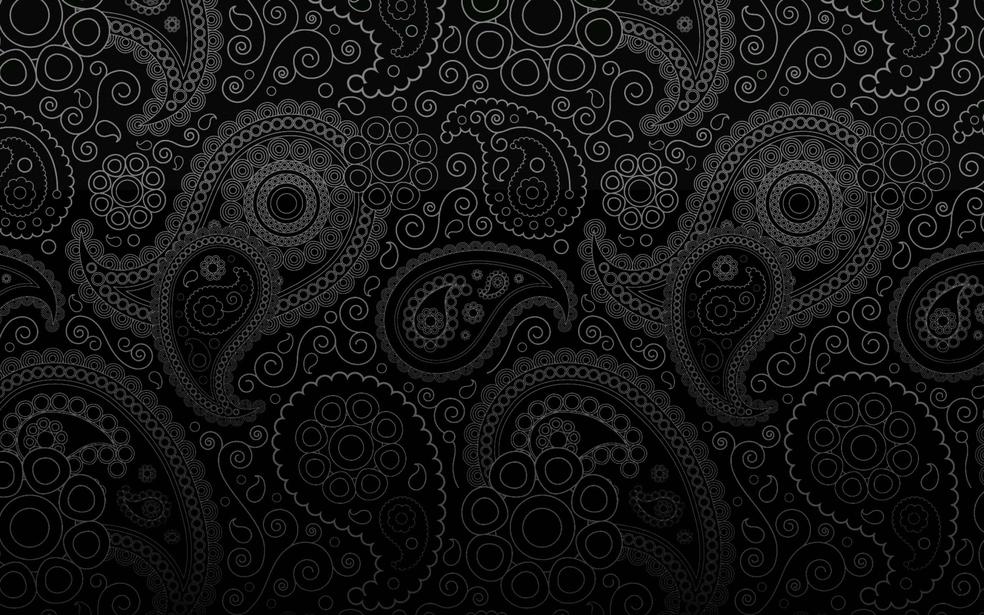Black African people have been caricatured as apes and monkeys since ancient times, with evidence dating back to at least the 3rd century BCE, long before Darwin’s theory of human evolution emerged in the 19th century. These portrayals are rooted in a blend of exploration accounts, philosophical speculation, and racial ideologies predating scientific evolutionary theory.

The earliest recorded example comes from Hanno the Carthaginian’s voyage along the west coast of Africa around 500 BCE. According to his account, interpreted through Greek translations, Hanno encountered a population described as “Gorillae,” hairy people mostly women with rough skins who resisted capture. This description is notable because it equated certain African peoples with apelike features. The name “gorilla” itself is etymologically traced back to this account, connecting the notion of wild, hairy Africans to nonhuman primates centuries before modern gorillas were scientifically classified.
Ancient and medieval perceptions often displayed unclear boundaries between humans and apes. In some philosophical and cultural contexts, apes were considered relatively close to humans, sometimes even thought to share emotions or behaviors deemed uniquely human. For instance, 18th-century philosophers like Rousseau and Lord Monboddo explored the idea of orangutans as “savage men,” capable of feelings such as shame and communication through rudimentary speech or tool use. Their reflections hint at an ambiguous view, where certain animal caricatures of people influenced emerging ideas of humanity and civilization.

However, not all references were neutral or scientific. Certain pre-modern writers used animalistic comparisons to dehumanize African peoples, particularly to justify slavery. Ibn Khaldun in the 14th century described Negro populations as having “little (that is essentially) human” attributes, equating them with dumb animals. Similarly, the 12th-century Jewish philosopher Maimonides placed some African groups below full human status, likening them to a level above apes but beneath humans concerning intellectual and religious development. These narratives fed into racial hierarchies that devalued black Africans long before evolutionary theory offered a biological framework to discuss human origins.
Voltaire’s 18th-century literary work “Candide” presents a fictional yet revealing depiction of apes as human-like beings capable of intimate emotional relationships with women. His portrayal reflects contemporary attitudes wherein distinctions between certain apes and humans were flexible, culturally constructed, and sometimes used to explore or mock notions of race and identity.

| Period | Key Figure/Source | Depiction/Concept | Relation to African People |
|---|---|---|---|
| 3rd century BCE | Hanno the Carthaginian | Gorillae as hairy “wild people” | Early naming of ape-like Africans |
| 12th century | Maimonides | Africans likened to below-human status | Dehumanizing rationale for inferiority |
| 14th century | Ibn Khaldun | Negroes described as animal-like | Justification of slavery |
| 18th century | Jean-Jacques Rousseau, Lord Monboddo | Apes as “savage men,” shared traits with humans | Blurred ape-human boundary |
| 18th century | Voltaire’s Candide | Apes involved in human-like relationships | Social commentary on human-ape distinctions |
Charles Darwin’s theory of evolution by natural selection, published in 1859, offered a scientific explanation of human origins and common descent with apes. Yet the caricaturing of black Africans as apes predates this theory by two millennia. Misrepresentations and dehumanization related to these racial caricatures were already embedded in literature, philosophy, and social attitudes well before Darwin’s work.
In sum, the association of black Africans with apes emerges from early exploration narratives, cultural misunderstandings, and racial prejudices extending back to antiquity. This longstanding caricature was not caused by or dependent on evolutionary science but evolved separately from it. While Darwin’s insights challenged traditional views of human uniqueness, the ape imagery applied to African peoples had been a tool for othering and oppression centuries earlier.

- The caricature of black Africans as apes dates back to at least 3rd century BCE with Hanno’s “Gorillae.”
- Ancient and medieval authors sometimes blurred human-ape distinctions culturally and philosophically.
- Pre-Darwinian justifications of slavery used animalistic comparisons to deny African humanity.
- The word “gorilla” itself derives from a Greek translation of early African exploration.
- These portrayals predate Darwin’s evolutionary theory by over 2,000 years.
How Long Have Black African People Been Caricatured as Apes and Monkeys? Do These Portrayals Predate Darwin’s Theory of Human Evolution?
Black African people have been caricatured as apes and monkeys for well over two millennia—long before Charles Darwin’s 1859 theory of human evolution even hit the public sphere. In fact, these portrayals stretch as far back as classical antiquity and have woven through various historical periods, intertwining with racist ideologies and justifications for oppression. But what does that really mean? Let’s unpack this history with facts, stories, and some refreshing clarity.

It’s easy to think the degrading idea of linking Black Africans to apes started only in the 19th century, when Darwin’s groundbreaking “On the Origin of Species” stirred debates about human ancestry. However, the roots dig deeper and older—reaching back at least to the 3rd century BCE with the Carthaginian voyage of Hanno.
From Hanno the Carthaginian to the “Gorillae”: Early Perceptions

Hanno, a navigator from Carthage, sailed the west coast of Africa around 450 BCE or possibly earlier, reaching near modern-day Sierra Leone or Cameroon. His accounts, chronicled in ancient texts, describe an island with a “lake with another island” inhabited by a tribe mostly of women with hairy bodies. These people were called “Gorillae” by interpreters. While modern historians debate the literal truth of this tale, it signals something important:
“If Hanno told the truth, he saw no difference between man and gorilla.” — Rennie 2
What’s fascinating is that the very word gorilla itself comes from this ancient story. Etymology shows the term derives from a Greek word, which in turn borrowed it from an alleged African word, recorded back around 500 BCE. A U.S. missionary named Thomas Savage then popularized the term for ape species in the mid-19th century—long after Hanno’s voyage but before Darwin’s evolutionary theory.
This indicates a historical continuity: linking African peoples and apes is not a product of Darwin’s ideas, but something that had been embedded in European and Mediterranean thought for centuries.
18th-Century Thinkers: Were Apes “True Savage Men”?
Jump forward about two thousand years, and we see 18th-century philosophers grappling with humans’ relationship to apes. Jean-Jacques Rousseau described creatures called “Pongos” (hairy beings) as possibly real “savage men,” implying they were closer to a natural human state. Similarly, Lord Monboddo famously argued Orangutans could feel shame and even communicate, suggesting some blurred lines between ape and man.
This wasn’t scientific mockery but rather hints of a complex, if flawed, attempt to understand humanity and “the savage.” Yet, it also reflects a subtle racialized narrative where non-European peoples, often Africans, were portrayed as closer to these “hairy men” or apes. Even Voltaire’s Candide humorously recounts South American natives who mourned apes as lovers, affirming apes as “a quarter human”—a notion creeping into popular culture.
Medieval and Islamic Writings: Animals, Slavery, and Dehumanization
The association goes even back into the medieval period, when racist caricatures justified brutal realities like slavery. Ibn Khaldun—the influential 14th-century Islamic philosopher and historian—described Black Africans as possessing few “essentially human” qualities, likening them to dumb animals to rationalize their enslavement. Around the same time, the Jewish philosopher Maimonides in the 12th century referred to some peoples, including Africans, as lower than humans but above apes—an ominous middle ground meant to diminish their status.
These writings did more than insult; they underpinned social systems that exploited millions by denying their humanity. The use of animalistic imagery blends with pre-existing biases, suggesting long-standing cultural mechanisms to otherize Black people as subhuman before any evolutionary science emerged.
Did Darwin’s Theory Spark These Racist Caricatures?
Short answer: No. Darwin’s theory of evolution did shake the scientific world but did not create the caricature linking Black Africans to apes. Rather, existing prejudices seized on Darwin’s work to falsely legitimize racist hierarchies by “scientifically” suggesting some humans were closer to apes than others. However, derogatory analogies and animalization were present long before.
Historical caricatures are deeply rooted in the desire to justify unequal treatment and roughly categorize “other” humans as less evolved or less civilized. The idea of mocking Black Africans as apes is, therefore, a cultural legacy that predates scientific theories and instead emerges from social and political needs stretching back centuries.
Why Does This Matter Today?
Understanding this long history matters. It helps dismantle the simplistic notion that Darwin “started” racial caricatures or that science is inherently racist. Instead, it frames such portrayals as social constructions that have co-opted scientific language for harmful ends.
Recognizing how these ideas were spread—from Hanno’s “Gorillae,” through medieval texts, to 18th-century philosophers—reveals how dehumanization persisted across time and geography. This matters especially in ongoing conversations about racism, representation, and the persistence of harmful stereotypes.
What Can We Learn From This?
- Caricatures and stereotypes are not innocent or accidental. They often originate in power dynamics and are used to justify inequality.
- Science is not to blame but has been misused. Darwin’s theory, though controversial, doesn’t inherently support racial hierarchies.
- Historical awareness is key. Acknowledging the deep roots of racist imagery helps challenge it more effectively today.
So next time you see racist caricatures or hear false claims about “scientific racism” beginning with Darwin, remember the story starts much earlier. Sometimes, the past’s shadows stretch farther than we imagine.
A Final Thought
History teaches us that ideas do not emerge in isolation. The caricature of Black Africans as apes and monkeys has spanned over two thousand years—woven into tales, philosophy, religion, and power.
It’s a painful and persistent myth to uproot but understanding its timeline gives us tools to do just that. And while the subject is serious, a bit of irony creeps in: it took hundreds of years for humans to recognize that the “Gorillae” of Hanno’s tale were real animals—not savage humans or excuses for cruelty. Humanity’s true evolution, it seems, is beyond biology—it is in knowledge, empathy, and justice.
How long have black African people been caricatured as apes and monkeys?
Such caricatures date back to at least the 3rd century BC. Hanno the Carthaginian’s account described hairy, savage people called “Gorillae.” These early depictions linked African peoples with apes long before modern scientific ideas emerged.
Did these portrayals predate Darwin’s theory of human evolution?
Yes. These portrayals existed over 2,000 years prior to Darwin’s 19th-century theory. They were part of cultural and exploratory narratives in ancient and medieval times.
How did early philosophers view the relationship between apes and humans?
Some 18th-century thinkers, like Rousseau and Lord Monboddo, saw apes as closely related to humans. They believed apes had emotions and behaviors similar to humans, sometimes blurring the boundary between the two.
Were animal caricatures of black Africans used to justify slavery?
Yes. Writers like Ibn Khaldun and Maimonides compared black Africans to animals or ape-like beings to deny their full humanity and rationalize slavery in their societies.
What is the origin of the word “gorilla” in relation to these caricatures?
The word originates from a Greek term used in a translation of Hanno’s report around 500 BC. It referred to wild, hairy people on the African coast, linking the name to human groups before the ape was scientifically classified.




